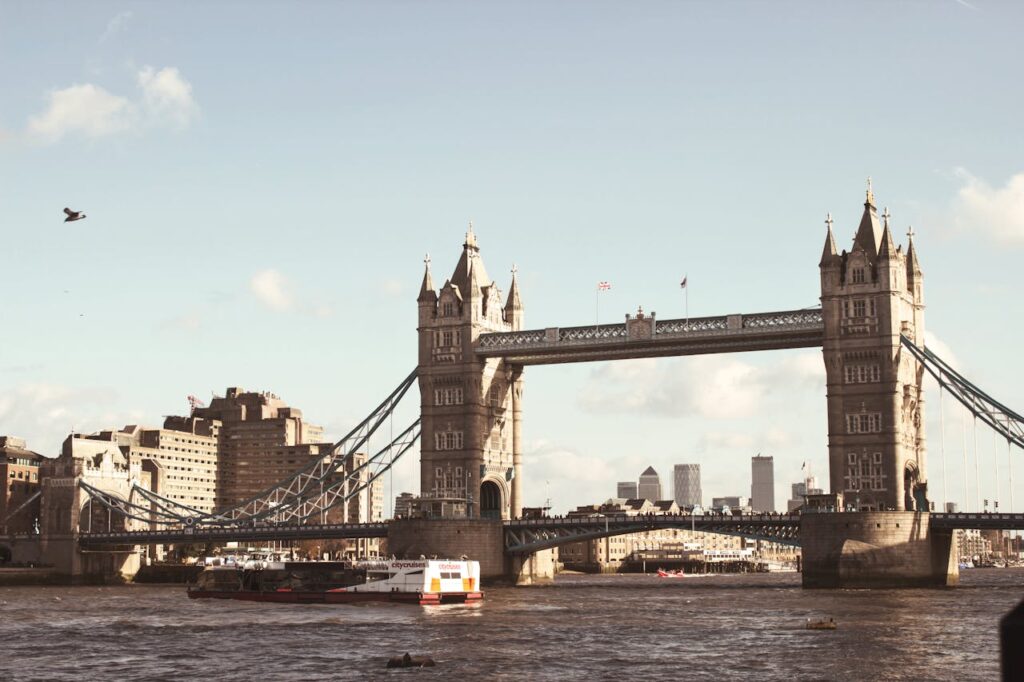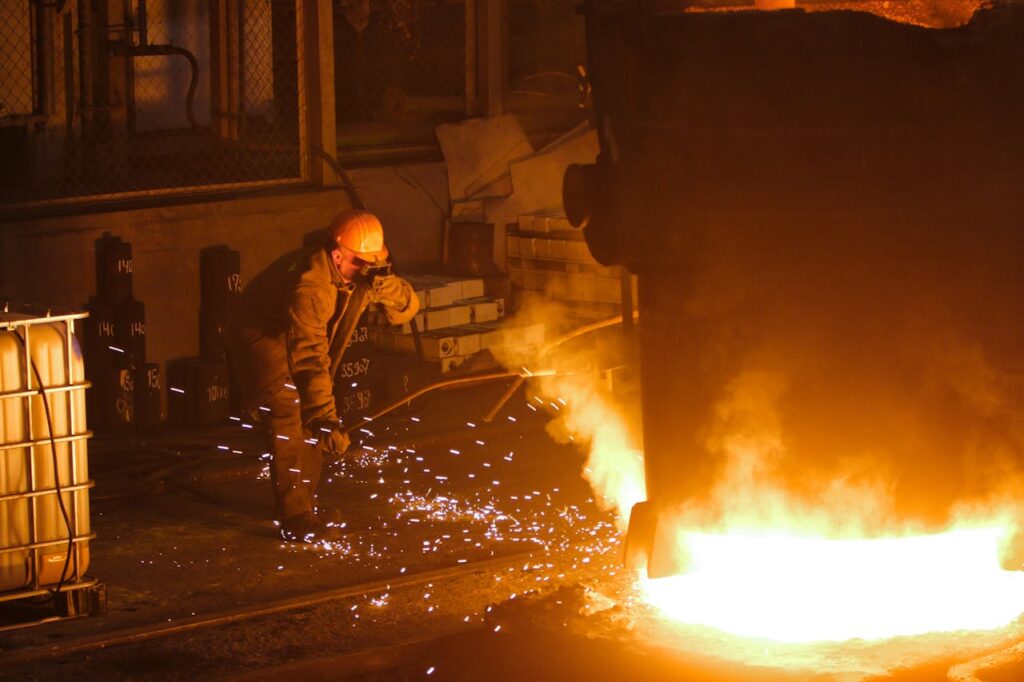YTC Ventures | Technocrat’ Magazine
November 7, 2025
In the shadow of a faltering pound and headlines screaming of stagnant growth, Britain’s economy teeters on the brink of yet another recession. Once the workshop of the world, the UK now grapples with persistent inflation, sluggish productivity, and a debt burden that echoes the ghosts of imperial overreach.
As the nation stares down a winter budget that threatens further tax hikes and business flight, it’s time to confront an uncomfortable truth: the seeds of this malaise were sown not just in recent blunders like Brexit, but in the seismic shift of 1947, when the empire began to unravel, stripping away the cheap resources and captive markets that had propped up Britain’s prosperity for centuries. This article dissects the “freedom of colonies” – that polite euphemism for decolonization – and traces how successive prime ministers have either patched or pulverized the economic foundations left behind.
Trending Headline: “Empire’s Endgame: How Losing India in ’47 Doomed Britain’s Wallet Forever – And Why We’re Still Paying the Price”
This headline captures the zeitgeist bubbling on social media and economic forums, where posts lament the UK’s “doom loop” of debt and decline, often tying it back to the post-war loss of imperial muscle. It’s sharp, provocative, and primed for shares in a year when GDP per capita has flatlined amid global headwinds.
The Freedom of Colonies: A Bitter Brew for Britain’s Bottom Line
The year 1947 wasn’t just a footnote in history books; it was an economic earthquake. India’s independence on August 15 marked the acceleration of decolonization, a process that forced Britain to confront its post-World War II bankruptcy.
The war had drained the Treasury, leaving £3 billion in debt (equivalent to trillions today), much of it owed to the U.S. under the Lend-Lease agreement.

The empire, once a source of raw materials like Indian cotton and African minerals at rock-bottom prices, evaporated overnight. No longer could Britain extract wealth without the “cost-benefit analysis” of global superpowers like the U.S. and USSR peering over its shoulder.From a freedom-of-colonies perspective, this was less a noble retreat than a forced eviction.
Nationalist movements, fueled by leaders like Gandhi and Nkrumah, demanded self-rule, but Britain’s haste stemmed from exhaustion: maintaining the Raj cost £100 million annually by 1946, while sterling balances in colonies swelled to £3.5 billion, threatening a run on the pound. The loss hit hard. Empire markets absorbed 40% of British exports pre-1947; by 1950, that fell to under 30%, exacerbating balance-of-payments crises. Decolonization didn’t just shrink the map – it starved the economy of preferential trade, cheap labor, and strategic ports, forcing a pivot to a welfare state on borrowed time.
The Suez Crisis of 1956, a desperate grab for canal control, only confirmed Britain’s demotion: a middle power, not a global one. Today, echoes linger in supply chain vulnerabilities and a nostalgia-fueled “declinism” that hampers investment.
The Policy Pivot: From Imperial Extraction to Austere Isolation
Post-1947, the cornerstone policy was the shift to the “sterling area” – an informal economic bloc of Commonwealth nations tied to the pound for trade stability. Launched in 1939 but formalized after India’s exit, it aimed to retain influence through soft power: preferential tariffs and aid via the Colonial Development and Welfare Acts (1940, renewed 1945). Yet, this was no panacea.
By the 1960s, as more colonies gained freedom (e.g., Ghana in 1957, Nigeria in 1960), the UK faced “sterling crises” – runs on reserves that forced devaluations in 1949 and 1967.

The policy morphed into full decolonization by the 1970s, with the Commonwealth as a fig leaf for lost leverage. Economically, it meant higher import costs (up 20% post-Suez) and a reliance on U.S. loans, cementing Britain’s subordinate role in the Bretton Woods system. Critics argue this “managed decline” stifled innovation, as funds once funneled from colonies propped up outdated industries like coal.
Prime Ministers and the Path to Perdition: A Rogues’ Gallery of Economic Fumbles
Since 1947, UK prime ministers have alternated between bold reforms and boneheaded blunders, each layering on the fragility exposed by decolonization. Here’s a rundown of key leaders, their policies, and how they exacerbated the rot – from nationalization overload to Brexit’s body blow.
| Prime Minister | Term | Key Economic Policies | Negative Impacts |
|---|---|---|---|
| Clement Attlee (Lab) | 1945–1951 | Nationalized coal, steel, railways, and Bank of England (1946–1949); created NHS and welfare state; devalued pound in 1949. | Post-war debt from empire’s end fueled inflation (up 5% by 1950); nationalizations stifled private investment, leading to “overmanning” and productivity lags that persist today. |
| Anthony Eden (Con) | 1955–1957 | Suez intervention; attempted to stabilize pound via IMF loans. | Suez debacle drained £100m in reserves, sparking a sterling crisis and 7% inflation spike; exposed imperial overreach, eroding investor confidence. |
| Harold Macmillan (Con) | 1957–1963 | “Wind of Change” decolonization speech; pushed EEC entry (vetoed); expanded welfare spending. | Accelerated loss of African colonies cut raw material inflows (e.g., copper prices volatile); boom masked underlying stagnation, with GDP growth averaging just 2.5% vs. Europe’s 4%. |
| Harold Wilson (Lab) | 1964–1970, 1974–1976 | Nationalized steel fully; devalued pound in 1967; created Dept. of Economic Affairs for planning. | Devaluation fueled import inflation (10% by 1968); “white heat of technology” fizzled, widening trade deficits from lost empire markets. |
| Edward Heath (Con) | 1970–1974 | EEC entry (1973); Decimalisation; Industrial Relations Act to curb unions. | EEC integration couldn’t offset decolonization voids; miners’ strikes led to 1973 oil crisis recession, with GDP contracting 1.5%. |
| Margaret Thatcher (Con) | 1979–1990 | Privatized industries (BT, British Gas); crushed miners’ strike (1984–85); Big Bang deregulation (1986). | Short-term boom (GDP +3.3% avg.), but inequality soared (Gini from 0.25 to 0.34); deindustrialization gutted 2m manufacturing jobs, fueling regional divides. |
| John Major (Con) | 1990–1997 | ERM exit (Black Wednesday, 1992); cut inflation to 1.5%. | ERM fiasco cost £3.3bn, eroding credibility; recession (1990–91) saw unemployment hit 10%, delaying recovery. |
| Tony Blair (Lab) | 1997–2007 | Granted Bank independence (1997); light-touch regulation; tripled public debt to £500bn. | Housing bubble inflated (prices +200%); financial deregulation sowed 2008 crash seeds, with household debt hitting 160% of GDP. |
| Gordon Brown (Lab) | 2007–2010 | Bank bailout (£850bn); fiscal stimulus post-2008. | Debt ballooned to 80% GDP; austerity setup punished growth, with productivity flatlining since. |
| David Cameron (Con) | 2010–2016 | Austerity cuts (£100bn); Brexit referendum. | Slashed public investment 20%, stunting recovery; Brexit vote triggered immediate 2% GDP hit from uncertainty. |
| Theresa May (Con) | 2016–2019 | Brexit transition; corporate tax cuts to 19%. | Trade frictions shaved 1–2% off GDP annually; investment froze, exacerbating post-empire supply woes. |
| Boris Johnson (Con) | 2019–2022 | Leveling Up; furlough scheme; hard Brexit. | Truss mini-budget chaos (2022) spiked yields 1%; COVID borrowing added £400bn debt, but uneven recovery widened North-South gap. |
| Liz Truss (Con) | 2022 | £45bn unfunded tax cuts; energy price cap. | Market meltdown forced U-turn; gilt crisis hiked mortgage rates 2%, tipping economy toward stagnation. |
| Rishi Sunak (Con) | 2022–2024 | Stabilized rates; Autumn Statement hikes. | Inflation peaked at 11% (2022); growth averaged 0.5%, with vacancies down 38 months straight. |
| Keir Starmer (Lab) | 2024– | National Insurance hikes; green investment push. | Early contraction (May 2025: -0.1%); tech IPO warnings signal capital flight amid tax fears. |
These missteps compound: Attlee’s nationalizations bred inefficiency, Thatcher’s deregulation inequality, and Brexit a 4–6% permanent GDP scar. Productivity, once doubled pre-2008, has crawled 5% since – a “puzzle” rooted in low investment and policy whiplash.
London’s Loaded Elite: A Table of Unearned Splendor Amid National Scrimp
While the UK economy sputters – with unemployment nearing 5% and inflation breaching 4% – London’s gilded few thrive, a stark reminder of wealth concentration in the capital.
Here’s the 2025 snapshot:
| Wealth Category | Number in London | Total Wealth Estimate | Notes |
|---|---|---|---|
| Millionaires (≥$1M liquid assets) | 215,700–227,000 | $1.3 trillion | Down 12% from 2024 due to non-dom tax changes; still tops Europe, but outflows hit 16,500 projected for 2025. |
| Centi-Millionaires (≥$100M) | 370 | $150–200 billion | Concentrated in Mayfair/Knightsbridge; tech/finance driven. |
| Billionaires (≥$1B) | 33–36 | $344 billion (family offices) | Slight dip from 35 in 2024; includes Russian oligarchs fleeing sanctions, but Monaco/UAE luring more amid inheritance tax hikes. |
This enclave of excess – 77 billionaires in the “Platinum Triangle” alone – underscores the two-speed economy: London booms while the North withers. As Reeves eyes her budget, will she tax the towers or tank the rest? History suggests the latter.
The Grinding Grind: Worker-Class Salaries in London – Blue Collar vs. White Collar
Beneath the skyscrapers and champagne flutes, London’s worker class – the plumbers, nurses, clerks, and coders who keep the city pulsing – scrapes by in a brutal cost-of-living vise. With average rents devouring 40% of take-home pay and the capital’s monthly average salary hitting £2,960 (about £35,500 annually), the divide between blue-collar trades (manual, hands-on labor) and white-collar professions (office-based, administrative roles) is a chasm of quiet desperation.
Blue-collar workers, often in construction, delivery, or maintenance, average £35,500 yearly in Greater London – a 18% premium over the UK-wide £30,000 due to urban demand and hazard pay. Entry-level starts at £27,400, climbing to £42,100 for veterans with certifications. Yet, overtime is king here; without it, many hover near the £25,900 median for trades like landscaping or electricians.

White-collar earners, from junior analysts to mid-level managers, command £41,000 on average – London’s full-time median – buoyed by finance and tech hubs but eroded by stagnant graduate starts (£30,000 for experienced juniors).
Bonuses can push totals to £50,000+, but the entry barrier (degrees, networks) leaves many in shared flats, saddled with £40,000 student debt.

The gap? White collars outpace by 15-20%, yet both feel the pinch: blue-collar inflation hits harder on energy and tools, while white-collar remote work dreams clash with Tube fares and hybrid commutes.Here’s a 2025 breakdown by key trades and roles, drawing on ONS and salary surveys:
| Category | Trade/Role Examples | Average Annual Salary (London, £) | Hourly Equivalent (£) | Notes |
|---|---|---|---|---|
| Blue Collar | Landscaper/Gardener | 25,900 | 12.50 | Seasonal; equipment costs eat 10% of pay. |
| Blue Collar | Construction Laborer | 32,000 | 15.50 | Overtime boosts to £40k; injury risks high. |
| Blue Collar | Electrician/Plumber | 38,000 | 18.00 | Certified trades; demand up 12% post-Brexit shortages. |
| Blue Collar | Delivery Driver/Courier | 30,000–52,000 | 14.50–25.00 | Gig economy volatility; fuel costs up 20%. |
| Blue Collar | Average Across Trades | 35,500 | 17.00 | 18% London uplift; unions pushing for £40k floor. |
| White Collar | Junior Admin/PA | 30,000 | 14.50 | Entry-level; shared housing norm. |
| White Collar | Accountant/Analyst (Mid) | 45,000 | 21.50 | Bonuses add £5k; City firms skew higher. |
| White Collar | Marketing/HR Manager | 42,000 | 20.00 | Hybrid perks; gender pay gap at 7%. |
| White Collar | IT Support Specialist | 40,000 | 19.00 | Tech boom; remote options save £2k/year. |
| White Collar | Average Across Professions | 41,000 | 19.50 | Median full-time; degrees yield 10% premium over trades. |
This bifurcation fuels resentment: blue-collar trades offer quicker paths to stability via apprenticeships but cap out amid automation threats, while white-collar ladders promise more – until AI and offshoring clip the rungs. In a city where a one-bed flat costs £1,800 monthly, neither class thrives; both fuel the gig underbelly, from Uber shifts to freelance gigs.

Starmer’s green push may juice blue-collar renewables (wind techs eyeing £50k), but without wage parity, London’s “worker class” remains the empire’s forgotten foot soldiers – toiling for scraps in a gilded cage.Britain’s awful economy isn’t fate – it’s the bill for an empire’s end, bungled by leaders chasing shadows. Time to rebuild, or risk irrelevance.

Comments